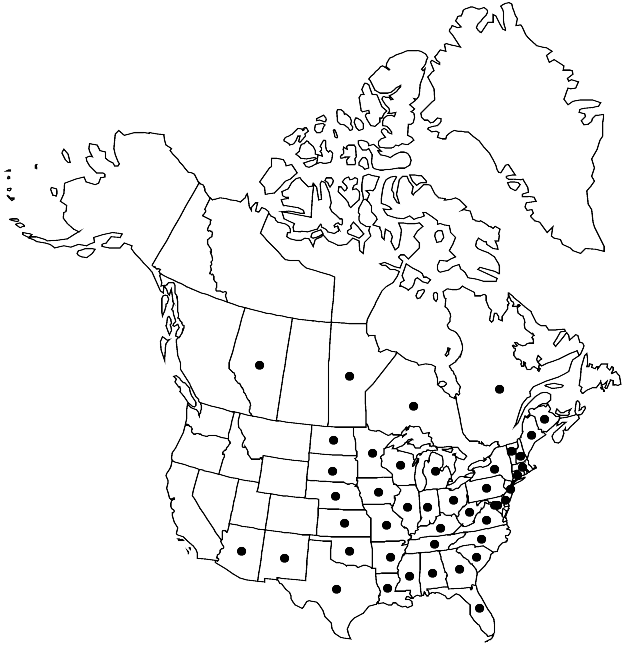Difference between revisions of "Anomodon minor"
Bot. Not. 1865: 126. 1865.
FNA>Volume Importer |
imported>Volume Importer |
||
| (3 intermediate revisions by 2 users not shown) | |||
| Line 10: | Line 10: | ||
|name=Neckera viticulosa var. minor | |name=Neckera viticulosa var. minor | ||
|authority=Hedwig | |authority=Hedwig | ||
| + | |rank=variety | ||
|publication_title=Sp. Musc. Frond., | |publication_title=Sp. Musc. Frond., | ||
|publication_place=210, plate 48, figs. 6 – 8. 1801 | |publication_place=210, plate 48, figs. 6 – 8. 1801 | ||
| Line 16: | Line 17: | ||
|name=Anomodon platyphyllus | |name=Anomodon platyphyllus | ||
|authority=(Hedwig) P. Beauvois | |authority=(Hedwig) P. Beauvois | ||
| + | |rank=species | ||
}} {{Treatment/ID/Synonym | }} {{Treatment/ID/Synonym | ||
|name=N. minor | |name=N. minor | ||
| − | |authority= | + | |authority= |
| + | |rank=species | ||
}} | }} | ||
|hierarchy=Anomodontaceae;Anomodon;Anomodon minor | |hierarchy=Anomodontaceae;Anomodon;Anomodon minor | ||
| Line 43: | Line 46: | ||
-->{{#Taxon: | -->{{#Taxon: | ||
name=Anomodon minor | name=Anomodon minor | ||
| − | |||
|authority=(Hedwig) Lindberg | |authority=(Hedwig) Lindberg | ||
|rank=species | |rank=species | ||
| Line 58: | Line 60: | ||
|publication year=1865 | |publication year=1865 | ||
|special status= | |special status= | ||
| − | |source xml=https:// | + | |source xml=https://bitbucket.org/aafc-mbb/fna-data-curation/src/2e0870ddd59836b60bcf96646a41e87ea5a5943a/coarse_grained_fna_xml/V28/V28_991.xml |
|genus=Anomodon | |genus=Anomodon | ||
|species=Anomodon minor | |species=Anomodon minor | ||
Latest revision as of 21:39, 5 November 2020
Plants medium-sized, in loose mats, dark to light green. Stems to 2.5(–6) cm, (0.6–)1–1.7 mm thick when dry, not or seldom branched, not pinnate, primary branches erect-ascending to arcuate, julaceous when dry, secondary branches not attenuate, often slightly clavate at apices; central strand cells poorly or not differentiated; pseudoparaphyllia absent; rhizoids few. Branch leaves imbricate, appressed, or rarely slightly crisped when dry, erect to spreading, complanate, not secund when moist, broadly oblong-ligulate, sometimes slightly spatulate, abruptly narrowed mid leaf, (1–)1.5–2.3(–3) mm; base broadly decurrent; margins undulate, sometimes infolded, sometimes dentate to spinulose at insertion because of very high papillae, entire at apex; apex rounded, intact; costa moderately strong, ending before apex, not obscured by laminal cells, often 2-fid at end, pellucid, abaxial costa cells papillose, papillae rounded-simple, in rows; basal laminal cells hyaline, mostly papillose, region extending to 1/3 basal leaf portion; medial and distal cells hexagonal, 7–12 µm wide, papillae many, branched. Perichaetia on terminal branches, beyond distalmost branching points, leaves with distal laminal cells papillose. Seta 0.4–1.6 cm. Capsule ovoid, urn 1.5–2.2 mm; stomata absent; annulus well developed; operculum obliquely short-rostrate, 0.3–0.6 mm; exostome teeth irregular, to 0.4 mm, not striolate proximally, papillose distally, often trabeculate; endostome very reduced, basal membrane to 2 cells high, segments irregular, fragmentary. Spores (11–)13–18(–21) µm, smooth to faintly papillose.
Phenology: Capsules mature early fall.
Habitat: Deciduous forests, calcareous rock, bark of trees
Elevation: moderate to high elevations
Distribution

Alta., Man., N.B., Ont., Que., Ala., Ariz., Ark., Conn., Del., D.C., Fla., Ga., Ill., Ind., Iowa, Kans., Ky., La., Maine, Md., Mass., Mich., Minn., Miss., Mo., Nebr., N.H., N.J., N.Mex., N.Y., N.C., N.Dak., Ohio, Okla., Pa., S.C., S.Dak., Tenn., Tex., Vt., Va., W.Va., Wis., Mexico, Central America (Costa Rica, Guatemala), Asia.
Discussion
Large plants of Anomodon minor with occasional noncomplanate leaves are distinguished from those of A. viticulosus by their more slender habit and smaller leaves, imbricate when dry and not secund when moist; A. viticulosus has more congested, secund branch leaves. Often A. minor has strongly spinulose basal marginal cells, like those of the auricles of A. rugelii. The lack of auricles and the thick papillae on the abaxial costa distinguish A. minor, although the presence of obvious papillae is not absolutely consistent. Characters that have been taken as of great taxonomic value for A. minor and A. rugelii may be found mixed. The only characters that remain congruent are the auricles (sometimes extremely reduced) and foliose pseudoparaphylla of A. rugelii (absent in all specimens of A. minor). Anomodon thraustus, rare in North America, has been misidentified as A. minor, but the distal costa of the latter remains pellucid for most of its length and often becomes asymmetrically 2-fid. In North America A. minor requires mesic habitats and fruits infrequently.
Selected References
None.